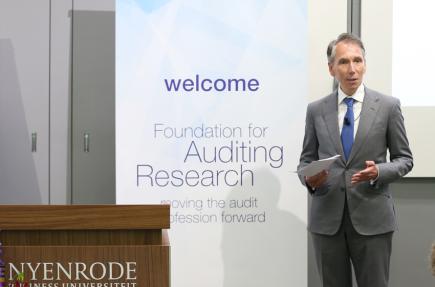FAR 2018 International Conference Summary
15 November 2018
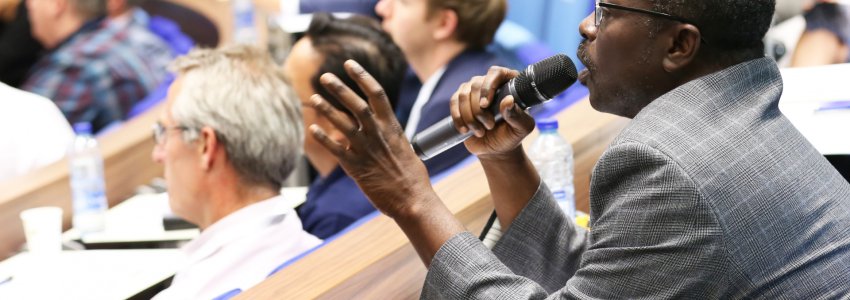
‘Moving the Audit Profession Forward – New Research and Best Practices’
Audit quality calls for profession-wide effort.
Auditors must do a better job, but clients and other players in the audit profession will also have to fulfil their responsibility in order to enhance audit quality. These are just two
take-aways of the third conference of the Foundation for Auditing Research (FAR). Culture and behaviour play a significant role when it comes to improving quality, as do diverse teams that provide psychological safety and room for reflection, bolstered
by appropriate, positive performance incentives.
Conference video:
The timing of the third international conference of the Foundation for Auditing Research could not have been better: not even a week before it was held, the Monitoring Committee Accountancy issued its second report, with the tantalizing title Doorpakken!(Press Ahead!).
Reforms in the audit profession need to be implemented more swiftly and with a more far-reaching effect, concluded the committee. This will generate momentum for the presentation of new scholarly research on improving audit quality, in which cooperation
with practice is essential. After all, this cross-fertilization can move the audit profession forward, as the title of the conference already indicates. ‘We are looking for the drivers of audit quality, across the full spectrum of the profession’,
says Willem Buijink, Professor at the Dutch Open University and previously at Tilburg University. Buijink is chairing the conference, which is attended by 140 participants.
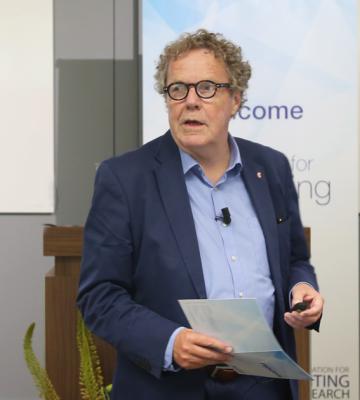
Fired due to material misstatements
Audit quality depends just as much on the client as on the auditor, as is evident from the research by Preeti Choudhary (University of Arizona). In nearly half of all cases the client refrained from
making adjustments to the financial report, which were proposed by the auditor. This is due to negative incentives: CFOs who report a material weakness are twice as likely to be fired in the subsequent year. Fear for losing their job, can potentially
tempt CFOs to refrain from reporting material weaknesses. Auditors also regularly miss or underestimate deficiencies of a more minor nature, causing these to develop into material weaknesses, Choudhary discovered. ‘So, the client isn’t always listening
to the auditor, even though the reliability of financial reporting is a shared responsibility’, states Olof Bik, Associate Professor at Nyenrode Business Universiteit and member of FAR’s day-to-day management team. ‘Would it help to report proposed
adjustments that are not followed by the client to the market?’, asks one of the other conference attendees. Choudhary considers this a good suggestion: ‘That would put pressure on the client to be more careful when it comes to making decisions concerning
adjustments.’ Egbert Eeftink (Head of Audit KPMG, Professor at VU University Amsterdam and member of the Executive Board of FAR) highlights the importance of probing discussions about adjustments with the CFO: ‘Not adjusting errors will eventually
lead to an overflowing bucket, and a higher risk profile.’
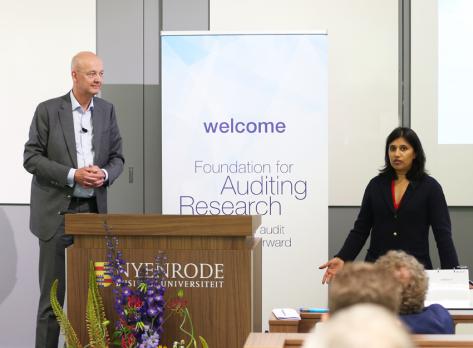
Learning culture
This fits perfectly well with the research on fostering a learning culture in audit teams by Wim Gijselaers, Therese Grohnert and Roger Meuwissen (Maastricht University). The three prime conditions for a learning culture
are reflection, sharing information and constructive conflict. So, there needs to be friction, albeit not the kind of friction that will give rise to negative emotions and defensive behaviour. Grohnert: ‘Take aviation, for example. If pilots aren’t
bold enough to have different opinions, chances are the plane will not reach its destination safely.’ Strong leadership is a crucial factor for creating a learning culture in teams. Junior auditors primarily need psychological safety, whereas most
senior auditors believe sharing information is important. To get the psychological support they need, junior auditors therefore must look to managers. Partners, finally, are responsible for the tone at the top and highlighting values. Once the audit
process starts, managers and senior auditors become more important for the team’s success. ‘This means different leadership is required in the various stages’, states Gijselaers.
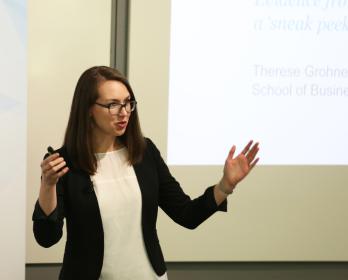
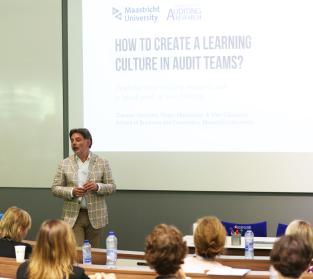
Grey hair still crucial
Ample experience in audit teams is thus of utmost importance: for assuring quality as well as for developing young generations of professionals. But building adequate experience is becoming more and more
difficult, according to Nico Pul, EY Executive Board member responsible for quality and also a member of FAR’s Executive Board. Because of standardization and regulatory pressure the audit profession as a whole is increasingly moving towards procedures
and efficiency. Professionals themselves however actually prefer heading in the other direction during their career: from standard knowledge to learning experiences, making one’s own judgement and problem-solving. Hence, there is a mismatch between
the direction in which the audit profession is heading and the development of the talented individuals, who are so much needed to help the audit profession improve in quality, Pul observes. This mismatch will become all the more evident, he says,
if artificial intelligence takes over a proportion of the audit work, in the future. But technology will never be able to completely replace the auditor, claims Pul. Professional judgement is and will remain of the utmost importance. ‘So, having grey
hair is still crucial for properly practising our profession’, states Pul.
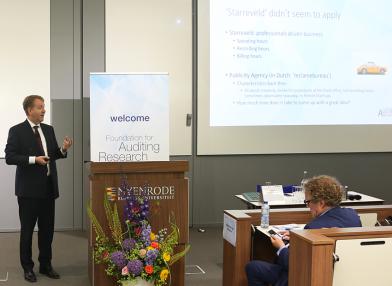
Strained relationship
Global audits often involve multiple audit teams that have to work together: the group auditor and the component auditor (local auditors who audit operating companies abroad). The quality of these group audits
is a cause for concern to audit regulators and is often marred by deficiencies. The research team included Anna Gold [1] (VU University Amsterdam) and inventoried problems faced by component auditors in practice. The provisional results provide a
great deal of insight into the often-strained relationship: component auditors want more involvement, coordination and communication on the part of the group auditor. The lack of this is tangible in all phases of audit assignments, from taking care
of staffing and planning to fieldwork, review and final reporting.
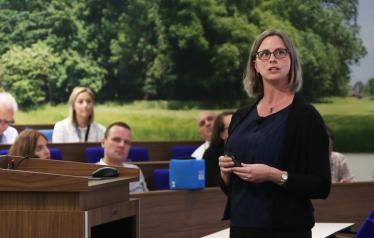
[1] Anna Gold’s co-researchers on this project are Denise Downey (Villanova University) and Andrew Trotman (Northeastern University).
Bonus and penalty
Olof Bik and Professor Jan Bouwens (the latter is from the University of Cambridge) are studying whether and how audit firms are improving audit quality with the help of performance and remuneration systems.
Some audit firms use a system of collective profit-sharing (all partners are paid the same), whereas other firms opt for individual performance-related remuneration, partly based on quality. The opinions in the audience in this topic are divided.
A supporter of performance-related pay: ‘You need individual pay as an incentive for star performers in the organization.’ Another participant: ‘Sticking to individual pay means people will stop helping their colleagues.’ A supporter of equal pay
points out that individual performance is tricky to measure within collective effort. This leads to a discussion about the underlying question: how is audit quality actually defined? Bik: ‘We still don’t have the answer to that question. So, should
quality be incorporated into performance and remuneration systems? Doesn’t a bonus for audit quality suggest that delivering quality is “optional” rather than self-evident?’
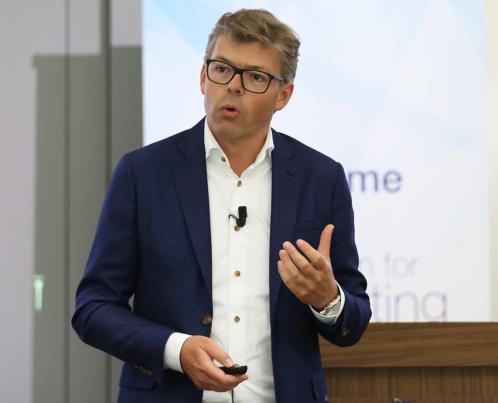
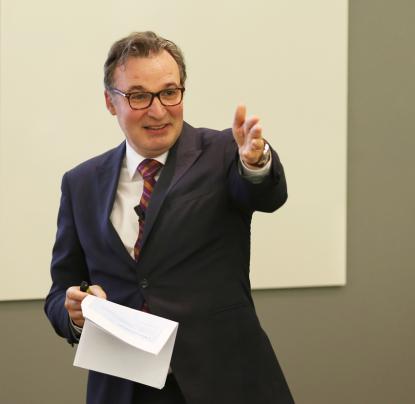
‘You don’t need to score a 10’
The leitmotiv in the ensuing panel discussion is cooperation. First of all in the profession itself. ‘All chain partners should take responsibility for bridging the expectations gap between auditors and
society’, Monique van Dijken-Eeuwijk, lawyer at NautaDutilh, states. ‘Not just the auditor, but also clients, regulator Autoriteit Financiële Markten (AFM) and the public at large, for instance.’ Anneke van Zanen, who recently became CEO of Baker
Tilly Berk: ‘Auditors work hard to raise the quality from the current seven to an eight. You really don’t need to score a 10. Nobody in the Netherlands is expecting that. That would make the audit far too expensive.’

Diversity also has a downside
Van Zanen is the only woman among 43 male partners at BTB. The panel discussion turns to the topic of diversity. Marleen Willekens, Professor at KU Leuven, makes a distinction between two dimensions of
diversity: underneath the surface of a mixed composition in terms of demographics, hierarchy and discipline, lurks a deeper form of diversity: different roles, knowledge and expertise. With this hidden form of diversity, group dynamics, pecking order,
mutual trust and common goals come into play. ‘Research shows that people from different disciplines are sometimes regarded as outsiders. Hence there’s also a downside to diversity’, Willekens states. Team dynamics and diversity also constitute one
of the ten drivers of audit quality, recently presented by the NBA. Each driver has a positive and a negative side, according to NBA-member Marco van der Vegte. The first driver, for example: ‘A stable team is important but, on the other hand, fresh
blood can actually boost quality.’ The drivers do not exist in a vacuum; quality is about teamwork. ‘Discuss things with one another.’
Holding up a mirror
The second day of the conference is kicked off by Peter Hopstaken, Head of Audit at Mazars. He stresses the importance of objective, independent research as an answer to societal distrust. ‘It is holding up
a mirror to the audit profession, while also giving stakeholders an insight into how the audit profession is working towards improving quality, based on data from the heart of the audit practice, supplied by the audit firms themselves.’ Hopstaken
also advocates researching audits in small and medium sized companies (SME’s) more extensively. ‘A lot of research focuses on companies listed on the stock exchange, although non-listed companies also have considerable social and economic importance.
More research into the importance and quality of audits is warranted.’
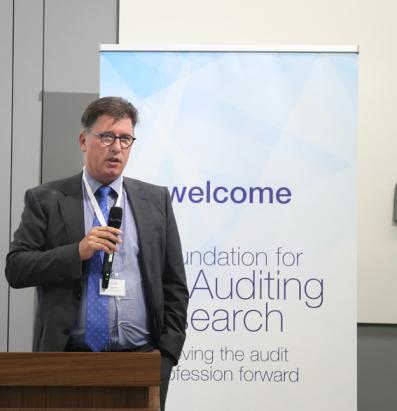
Other audits in SMEs?
Research carried out by Jeroen Suijs (Erasmus University Rotterdam) [1] is an example of this. His research – with which he will be starting under auspices of FAR this year – aims to answer the question whether
audits at SMEs call for specific audit standards, or can be aligned with regulations for public companies. Suijs: ‘Are auditors performing different audits at different companies, or are audits the same in practice, irrespective of the sector?’ Suijs
outlines the distinction between the internal and external demand for/value of audits. In terms of internal demand, the audit creates value for internal stakeholders, e.g. by helping to improve business processes. In terms of external demand, the
audit creates value for external stakeholders. e.g. assurance about the accuracy of financial reporting. In SMEs, it is common for internal demand/value to be more important than external demand/value, whereas this is the opposite in listed companies.
Suijs is keen to examine whether this distinction will lead to differences in audit approach, fees, staff deployment and audit quality.
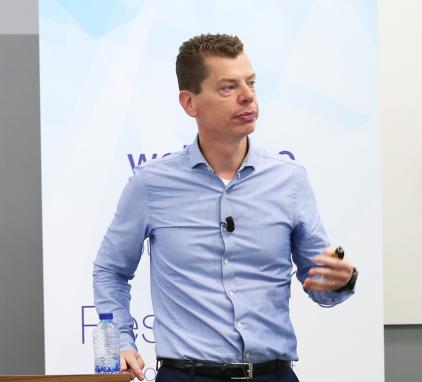
[1] The co-researchers of Jeroen Suijs on this project are Mahmoud Gad (Lancaster University) and Robin Litjens (Tilburg University).
Fraud officer?
Mark Peecher (University of Illinois) [1] is focusing solely on public companies. According to him, auditors can detect fraud prematurely by remaining alert to hidden signals during earnings calls: conference calls between
management and analysts and the media concerning operating results. Peecher shows an analysis of an earnings call concerning Lehman Brothers, eight days before the collapse of the bank. When untruths were told, the tone of voice changed. Peecher discovered
that auditors can be taught (even highly experienced auditors) to spot cheating, by pointing out the connection with emotions in the negative communication of managers. If auditors did not have such training, only 43% of them spotted fraud, compared
to 70% of auditors who had the training. A field experiment under the auspices of FAR is conducted to answer whether or not this can also be taught to inexperienced auditors. Evidence from the medical world reveals that people aged 20-40 are less
able to recognize emotions, just like people over 60. ‘So, junior professionals and partners may not be the most effective when it comes to detecting fraud’, says Peecher. But clients also should take their responsibility for preventing fraud, states
Michael de Ridder, globally responsible for audit quality at PwC, former CFO/COO PwC Netherlands and treasurer of FAR: ‘Each and every company should get a fraud officer.’ Peecher nods assent: ‘The audit committee of the client organization can be
the auditor’s ally.’

[1] The co-researchers of Mark Peecher on this project are Jessen L. Hobson and Devin Wilson (both also at the University of Illinois), and Sebastian Stirnkorb (Rotterdam School of Management).
The extent of price elasticity
Clients and audit firms are both part of a market that is subject to the laws of supply and demand. Joseph Gerakos (Dartmouth College) [1] is studying this market mechanism. According to Gerakos, not
enough research about economic perspectives is being carried out in professional services, including auditing. ‘While the market and “production process” of audit firms must be considered before you’ll be in a position to engage in a good dialogue
about audit quality.’ Demand-related research topics include competition in the market, price elasticity and the effects of changes or disruptions in the market, like the demise of a Big Four- firm (like Arthur Andersen in the wake of the Enron debacle)
or the introduction of mandatory rotation of auditors. After seven to ten years, rotation certainly has a considerable effect on staffing, team structure and staff training, is the picture that emerges from the reactions in the audience. Supply-related
research topics include the efficiency of audit firms when performing audits (in terms of labour and use of technology), economies of scale in this regard and the potential effects of restructuring, e.g. a forced split-up of audit and consultancy
activities, under pressure from the regulatory authority, or new players in the market.
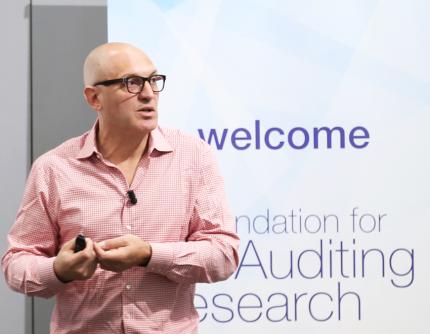
[1] De co-researchers of Joseph Gerakos on this project are Chad Syverson (University of Chicago Booth School of Business and NBER) and Ulrike Thürheimer (Maastricht University).
Trend towards improvement diminishing
The regulatory authority’s view on audit quality is discussed by Janine van Diggelen. Until last year she was chair of the global regulatory organization IFIAR (International Forum of Independent
Audit Regulators) and the AFM. Quality comes first, she argues. But she also states: ‘The ongoing improvement is clearly visible, but is running out of steam.’ Change programmes are not adequately tackling the causes of the problem, according to Van
Diggelen. She gives audit firms three pieces of advice. First and foremost, do not only look at audit files, but also at systemic issues within the current partnership structure. Secondly, focus on changing culture and behaviour. ‘Is the tone at the
top also being demonstrated in practice, a case of practise what you preach?’ Her third piece of advice: invest in better project management and create a safe learning environment rather than a culture of fear. Henriëtte Prast (Professor at Tilburg
University and chair of FAR) shares two observations regarding Van Diggelen’s introduction. The first: ‘The word “client” wasn’t mentioned in your contribution. That’s great because, at the end of the day, improving quality must focus on society as
the most important stakeholder.’ The second observation: ‘You also stated that shareholders and audit committees are encouraging competition based on quality rather than on price through the selection, appointment and assessment of auditors. That’s
another great starting point.’
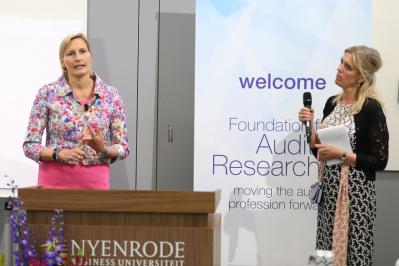
Evidence-based approach
Steven Salterio (Queens University, Canada) [1] asks attention for the knowledge gap between academics and practitioners in his contribution [2]. Academics primarily focus on production: collection and synthesis
of knowledge. Practitioners primarily focus on action: knowledge as problem-solving. ‘Academia and professional practice must learn to speak the same language and develop mutual understanding’, says Salterio. A lot of academic research is sticky,
he contends: the raw data need to be translated in practical applications before it can be used for problem solving. Better communication, collaboration and close interaction between academia and practice is needed to escape this ‘stickiness’. The
auditing profession can learn in this respect from the evidence-based approach in medical science. Medical research starts with a specific question from medical practice. Even the methodology is geared towards concrete application – both are honed
by a practice committee. Systematic evidence is then amassed, and translated into concrete recommendations. The audit profession also needs new approaches to research, Salterio states: more and better communication between sender and recipient, more
research ‘to order’ and more attention to synthesizing research in order to come up with a wide-ranging evidence base with a greater number of alternative sources.
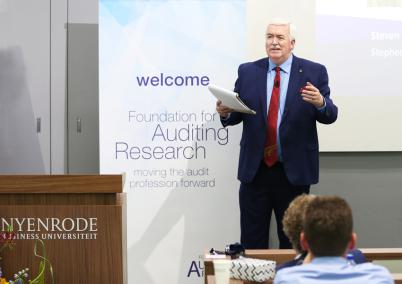
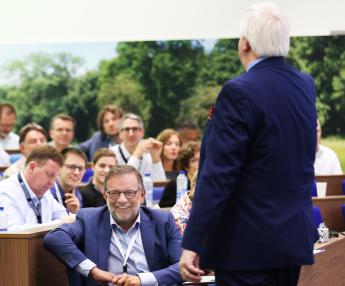
[1] Co-authors in the team of Steven Salterio are: Kris Hoang (University of Alabama), Jim Sylph (Ewing Consulting) and Yi Luo (Queen’s University).
[2] Steven Salterio recently published a (video) update on this topic, which you can acces
via this link (opens in PDF).
Cooperation taking off
‘Are we actually moving the profession forward?’ This bottom-line question is posed by Bert Albers, managing partner of Deloitte Netherlands and FAR board member, during his wrap-up of the conference. The answer
is a resounding yes, according to Albers. The budding relationship between practicing professionals and academics is taking off. ‘Something beautiful is blossoming. We’re not there yet, but we’re making great progress.’
